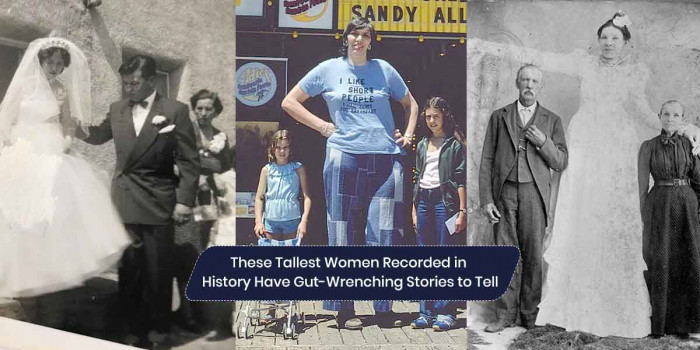10 Most Famous Pirates & Their Flags With Ultimate Thrill
The Golden Age of Piracy saw pirates in every part of the world. From Indian Ocean to Newfoundland, from Africa to the Caribbean...
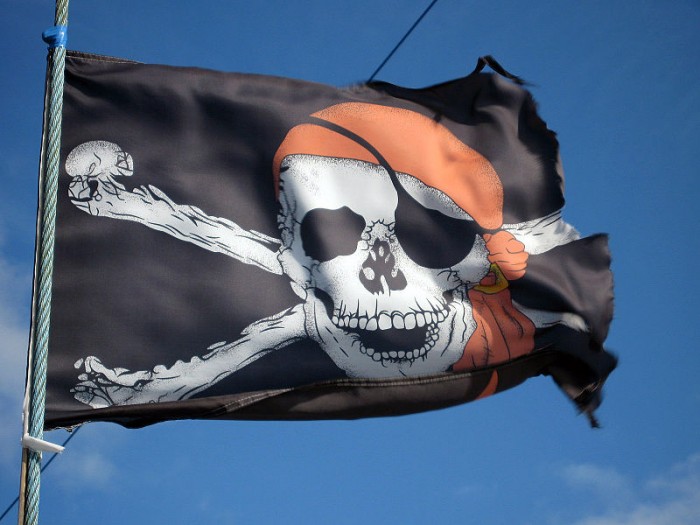
The Golden Age of Piracy saw pirates in every part of the world. From Indian Ocean to Newfoundland, from Africa to the Caribbean, thousands of pirates, corsairs, buccaneers and other scurvy sea dogs robbed merchantmen and treasure fleets on the seas. Most of these men became so famous that their names became synonymous with piracy. Their flags played an important role in accomplishing their mission. It gave them the confidence of their identities and accomplishments. Friends and foes recognized them through their flags.
Here are some pirates who made noteworthy contribution to pirate legend and history.
1. Bartholomew Roberts "Black Bart"
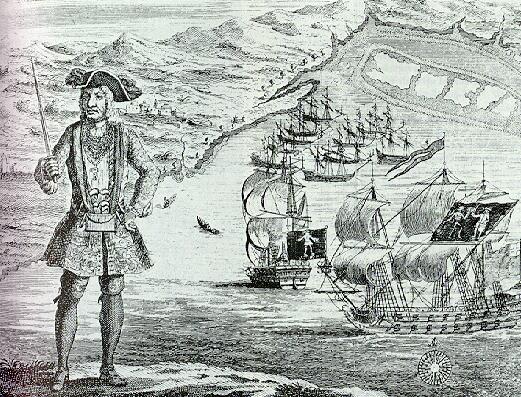
Bart Roberts was one of the most successful pirates of the Golden Age of Piracy who captured far more ships than other best known pirates of his era. While operating in the Atlantic and Indian Ocean, he captured more than 470 ships. But this was not what Robert had always wanted to do. In his young years, he was captured by pirates. As their relationship grew, he was voted by the crew as their captain. His crew admires him for his adventurist courage and they call him “pistol proof”. His followers and admirers reeled and even the Royal Navy was stunned when he died in the battle against British Captain Chaloner Ogle.
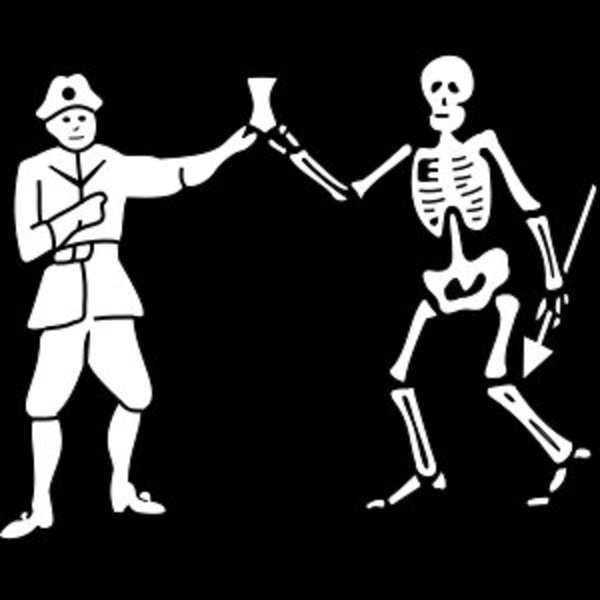
Black Bart used several flags but the one usually associated with him was a white pirate and a white skeleton holding hourglass between them. This signified that time was running out for his victims.
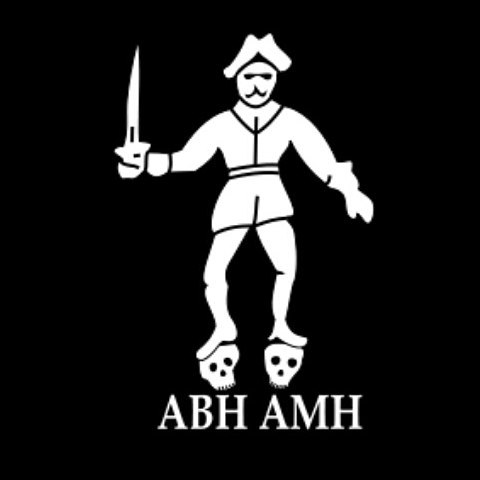
Bartholomew Roberts hated Barbados and Martinique islands since their governors had sent armed ships for capturing Robert and his crew. He made a special flag to keep his point. A white pirate that represents Robert stands on two skulls and initials ABH (A Barbadian’s Head) and AMH (A Martiniquan’s Head) written underneath.
2. Edward Teach "Blackbeard"
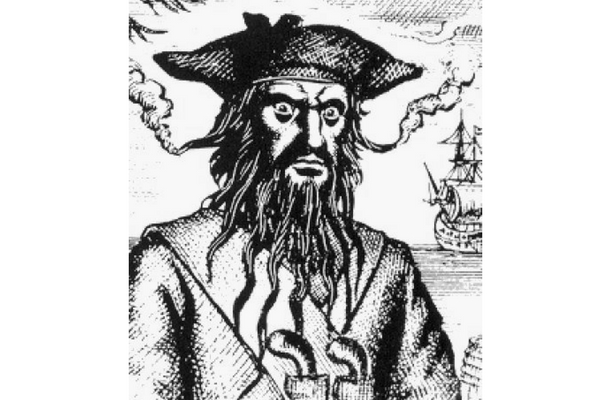
Blackbeard is one of the widely feared pirates. He had an army of 300 at the height of his career and commanded 4 ships. He was known for barreling into the battle with several knives, pistols and swords in both hands. He captured around 40 merchant ships in the Caribbean. He also defeated the famous warship HMS “Scarborough” in a sea battle. He is much known for his flamboyant appearance and dark full beard.
Queen Anne’s Revenge was his best known vessel. He terrorized the West Indies and Atlantic coast for years with this vessel until the Battle of Ocracoke off the coast of North Carolina. He was shot five times and stabbed more than 20 times before he died in the battle against English Navy. Legends immediately sprang up about his death. They claim that his headless body was thrown overboard and swam 2 to 7 times before sinking.
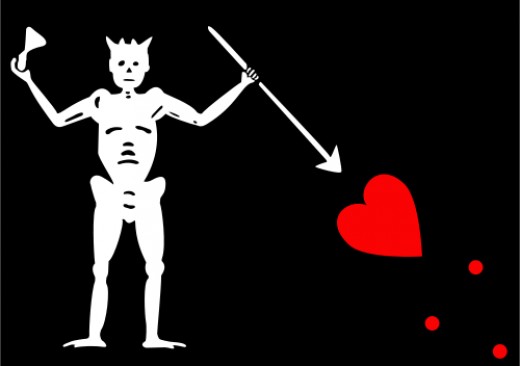
Legends say that Blackbeard used to put fuses in his beard and light them during the battle so that the smoke gave demonic appearance and his enemies feared from him. His black flag had a horned skeleton aiming a spear towards a heart dripping in blood while raising a toast from the other hand. The horns gave him a devilish appearance and dripping heart signified slow and torturous death for his attackers.
3. Edward England
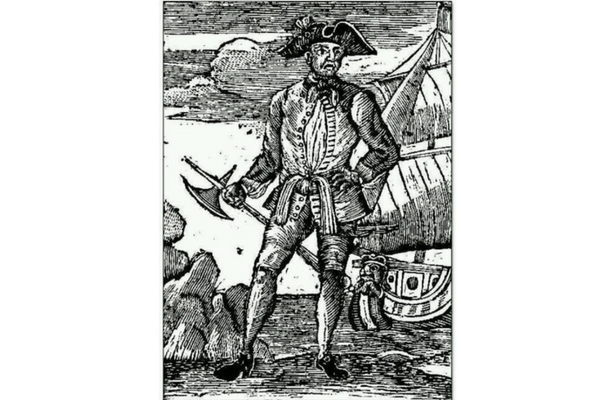
Edward England is an infamous pirate from the African coast and Indian Ocean region. Similar to Black Bart, he was forced to live a piracy life after being captured by a ship of swashbucklers. After a brief stint in the Caribbean, England worked his way towards gaining command of his own vessel. He sailed it in the Indian Ocean and raided slave ships.
The quality that made him different from other pirates was that he did not kill captives until it was necessary. But this magnanimity turned out to be the cause of his downfall. When the English trading ship, Cassandra captained by James Macrae came against them, England’s crew refused to kill their sailors. He was subsequently marooned on Mauritius. He survived for some time by begging for food and died in late 1720.
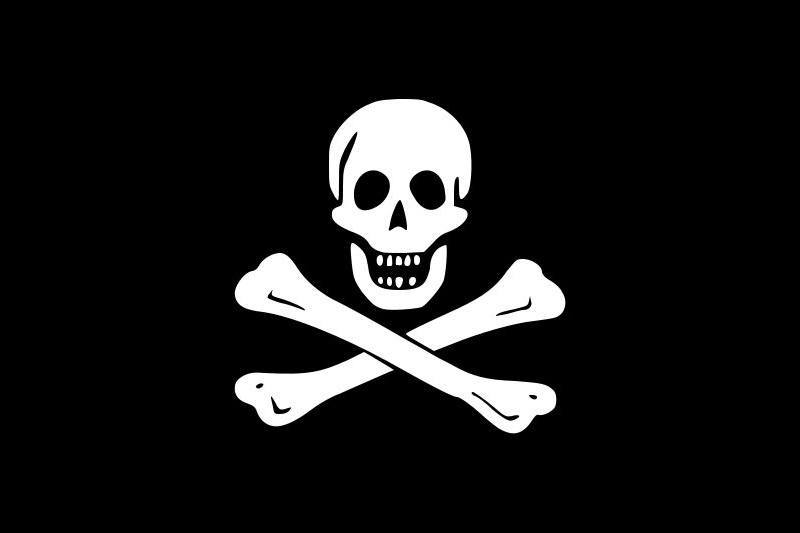
Edward England is solely remembered for his flag. A skull with two crossed over thigh bones - went on to become the famous “jolly roger” flag associated with pirates.
4. Henry Every
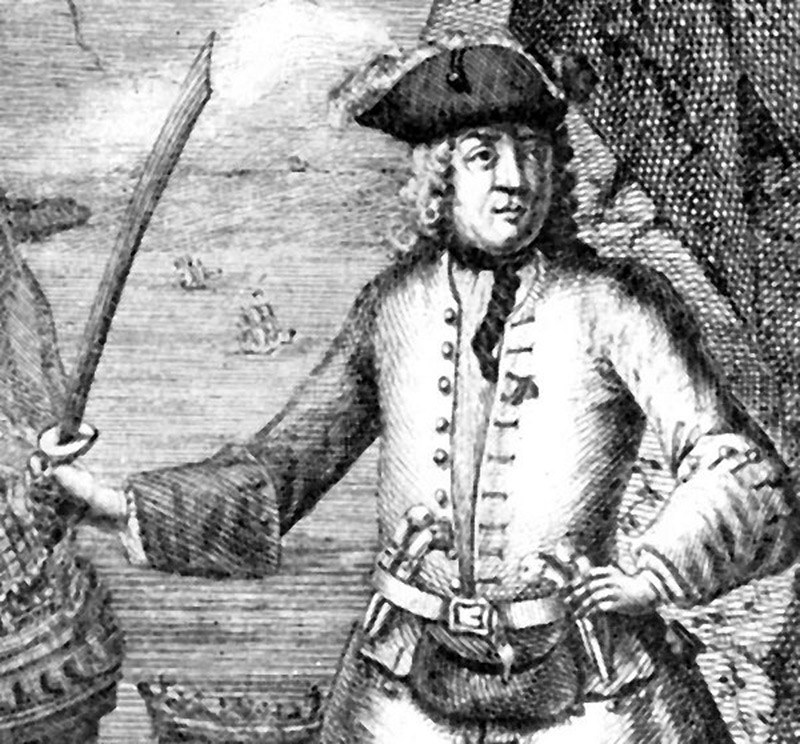
Henry Every, also known as Evory or Every operated in the Atlantic and Indian Ocean in mid 1690s. He used several aliases during his career such as Benjamin Bridgeman and Long Ben for his crew and associates. He was one of the most notorious pirates of his time and also became one of those few major captains who retired with his loot without being arrested or killed in battle. His piracy career existed only for 2 years but he has influenced many to adopt piracy.
Richest crime in history – early 1690s
Every has been on sail on many ships since his youth. By the early 1690s he had entered Atlantic slave trade. He was known to buy slaves and seize the slave traders themselves. As a pirate captain, he made only one voyage and in that single journey, he committed the richest crime in history.
Taking over Fateh Muhammed - August 1694
In August 1694, Every teamed up with four pirate ships including Thomas Tew in Mandab Strait. The crew attacked Fateh Muhammed, which had earlier repulsed an attack killing Captain Tew. Weakened with the earlier battle with Tew and intimidated by Fancy’s 46 guns, Fateh Muhammed’s crew put up little resistance but the ship was sacked by Every and his crew for £50,000 worth of treasure.
Disappearance of Every
Henry Every then sailed for the Ganj-I-Sawai. Every took over the ship after a violent battle. The loot totaled between £325,000 and £600,000, including 500,000 gold and silver pieces. However, the crew split up when the Governor of Jamaica did not pardon them. Majority of them retuned to Britain with Every. He was never seen again.
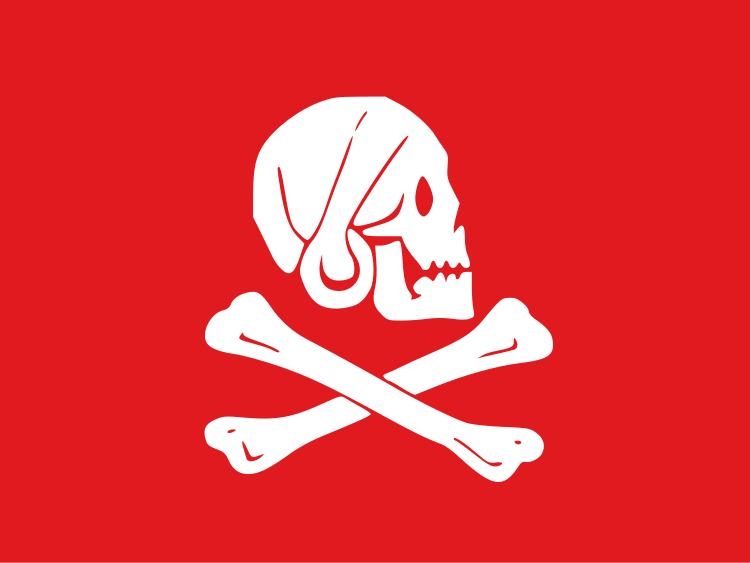
There are no reliable accounts of Every’s flag. According to “A Copy of Verses”, Every’s pirate flag was red with four gold chevrons. Red was a popular color for pirate flags but the significance of four chevrons is not certain. There is also no evidence which supports that Henry flew the flag.
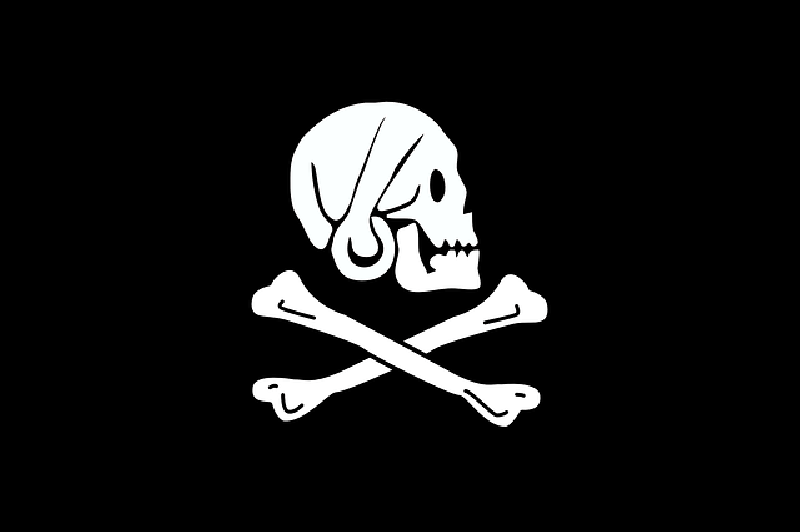
After Henry’s disappearance another flag was ascribed to him. A white skull wearing a kerchief and an earring, above two crossed boned on a black field. The flag does not appear in publications until 1930s. but if the flag is genuine, it contradicts the belief that Emanuel Wynn was the first pirate to use skull and cross bone motif in 1700. Also, earring and bandanas were not associated with pirates until Howard Pyle came up with his artwork in 1880s. it can be said that the flag is a 20th century invention.
5. “Calico Jack” Rackham
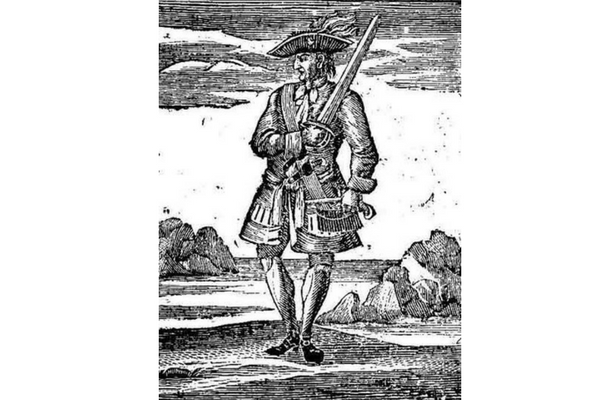
Calico Jack is the first known pirate to employ two most notorious female pirates of his time- Anne Bonny and Mary Read. He focused majorly on capturing commercial ships and small fishing vessels. In his attempt to take up retirement in 1719, he fell in love with Anne Bonny, who joined him in future adventures after concealing her identity in a man’s look. When the crew captured a Dutch merchant vessel, they unknowingly took Mary Read on board. Both these women proved to be excellent pirates.
Rackham died in a hopeless fight planned by Governor Woods Rogers. Only Bonny and Read fought with the 45 men in two large ships. Most of their crew pilots took cover below deck. Rackham was hung and gibbeted in Port Royal, Jamaica and Bonny and Read were jailed because of their pregnancy.
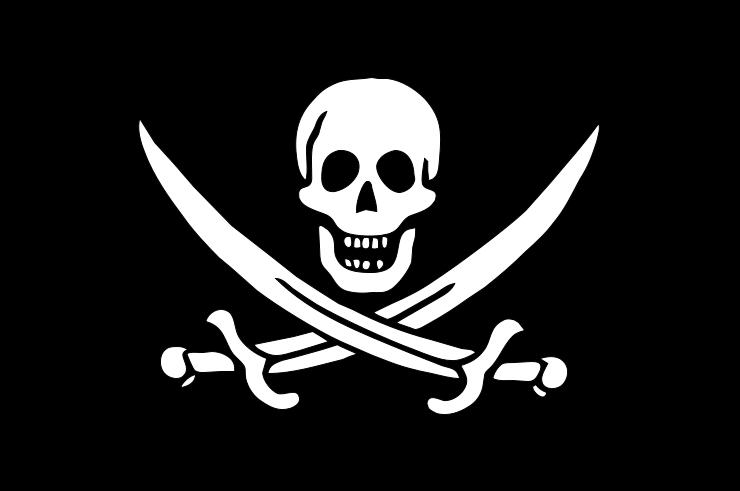
Apart from employing two female pirates on his ship, this famous pirate was also famous for his cool pirate flag. It shows a skull over crossed cutlasses. Even after the presence of many successful pirates, Rackham’s flag gained fame as “the” pirate flag.
6. Stede Bonnet
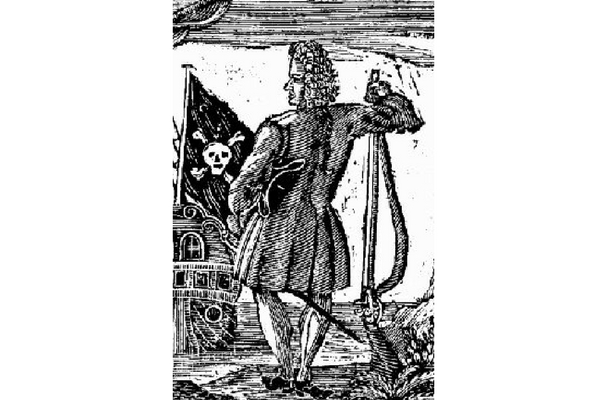
Stede Bonnet is also known as “the gentleman pirate”. He was an 18th century English pirate, who lived the life of a moderately wealthy man before becoming a pirate.
Summer of 1717 – Becoming a Pirate
Bonnet had no prior shipboard life but he decided to become a pirate in 1717 summers. He travelled with his crew along the American eastern seaboard with his first bought vessel named Revenge. On the way, he captured many vessels and burnt down the Barbadian ships.
Befriending Blackbeard
While sailing for Nassau, Bonnet got wounded in an encounter with a Spanish warship. Incapable of leading the crew, Bonnet temporarily handed over his ship’s command to Blackbeard, whom he met during this while. They worked together to capture merchant ships along the East Coast before separating in December 1717.
Late 1718 - Hanged to Death
Bonnet anchored his ship for repairing and careening on an estuary of Cape Fear River in August 1718. Colonel William Rhett led a naval expedition against these pirates on the river in late August-September. Bonnet was brought to trial and was found guilty for acts of piracy. On December 1718, he was hanged in Charleston.
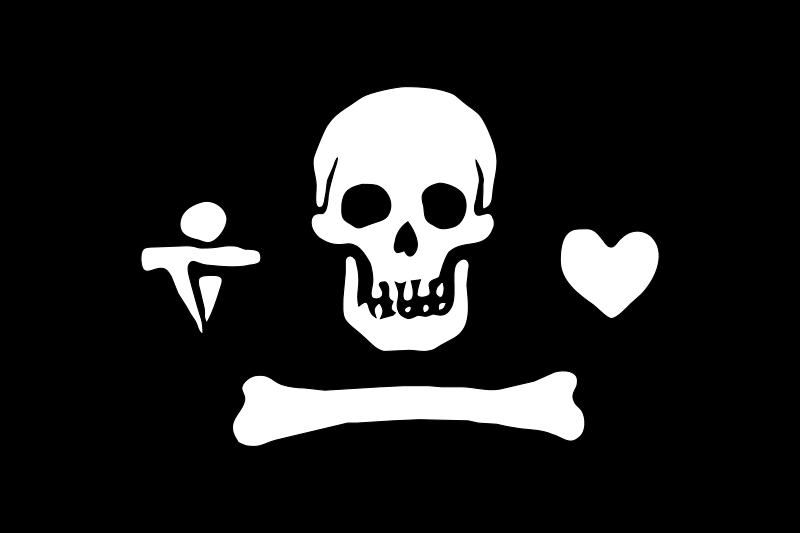
Bonnet’s flag is traditionally represented as a white skull above a horizontal bone. There is a dagger (violence) on one side and heart (life) on the other, all on a black field. This was meant to represent the scale of pirate justice.
7. Edward Lowe
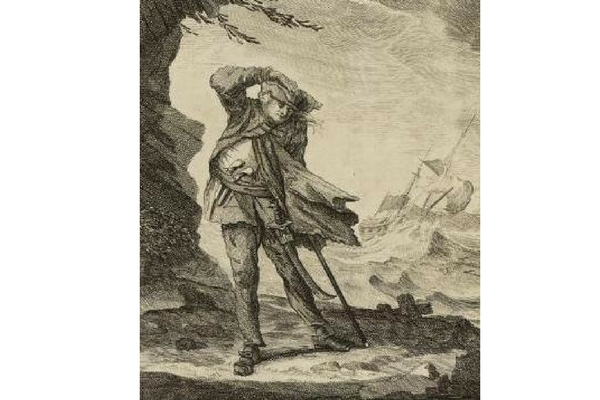
Edward Lowe used to pickpocket and engage in thievery before becoming a pirate. In May 1722, he joined a gang of men who planned to steal a shipment of logs for resale in Boston. Their failed attempts made Lowe and his friends leave the boat. On a later day, Lowe took over a small sloop with his gang and officially turned into a pirate determined to declare war against the world.
Lowe was a successful pirate. In one of his notable raids, he attacked 13 fishing vessels of New England which were anchored in Port Roseway. Lowe was climbing high on the ladder of piracy day by day and so was his notoriety.
After heading to Azores, he came to be known for his brutality and sadism. This included acts like cutting off the victim’s lips, cooking them and forcing the victim to eat.
Stories about Edward’s Death
There are two conflicting stories on Edward’s death. One states that Edward Lowe was last sighted with his ship Fancy in July 1723 near the Canaries and Guinea. People believe that his boat sank in a storm and he lost his hands. Another one states that Lowe was sent adrift by his crew and rescued by a French ship, who after learning his identity hanged him in 1724.
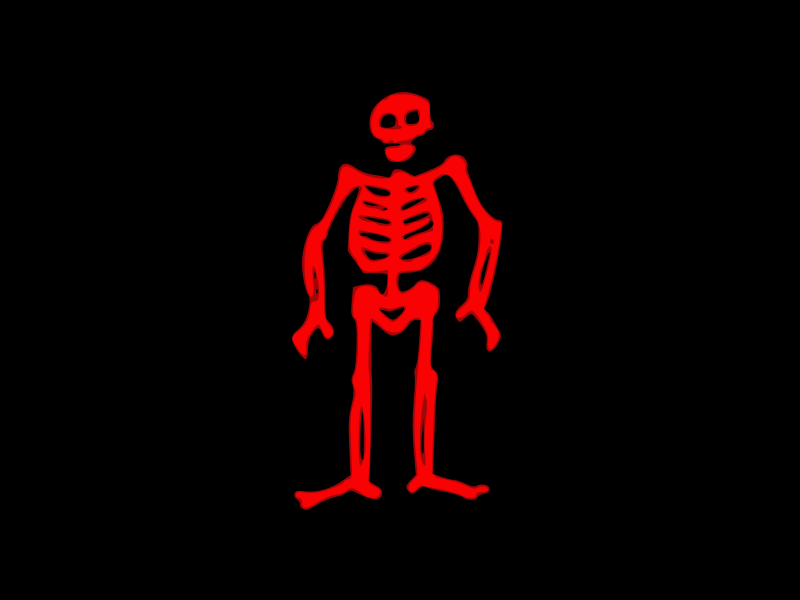
Edward Lowe came to constitute the definition of a vicious pirate. Famous for his brutality, the sight of his flag signaled other people that their deaths will be extremely painful. The red skeleton on a black Jolly Rodger represented sheer evil and anger of Low and his crew. And those standing against the flag will face a violent and bloody death.
8. Thomas Tew

Thomas Tew was also known as the Rhode Island Pirate. Tew was born in England but his family moved to Rhode Island in his youth. The pirate met his death on the second journey itself out of his two major piratical voyages. He pioneered a route which came to be known as the Pirate Round. His path was also followed by many other famous pirates including William Kid and Henry Avery.
Tew’s first major attack
Tew’s first attack was in the Red Sea around 1693 where he ran down a large ship from India to the Ottoman Empire. Despite their enormous garrison of 300 soldiers, the Indian surrendered without much resistance. Tew’s pirates found gold and silver worth £ 100,000 and many precious jewels, ivory, spices and silk.
Death in the battle - 1695
A 25 ship Mughal convoy slipped past the pirates during a night in September 1695. Tew and his crew pursued the ship. They attacked one of the ships which they believed to be Fateh Muhammed. Tew was killed in this battle. He is reported to be disemboweled by a cannon shot. Tew’s crew surrendered immediately.
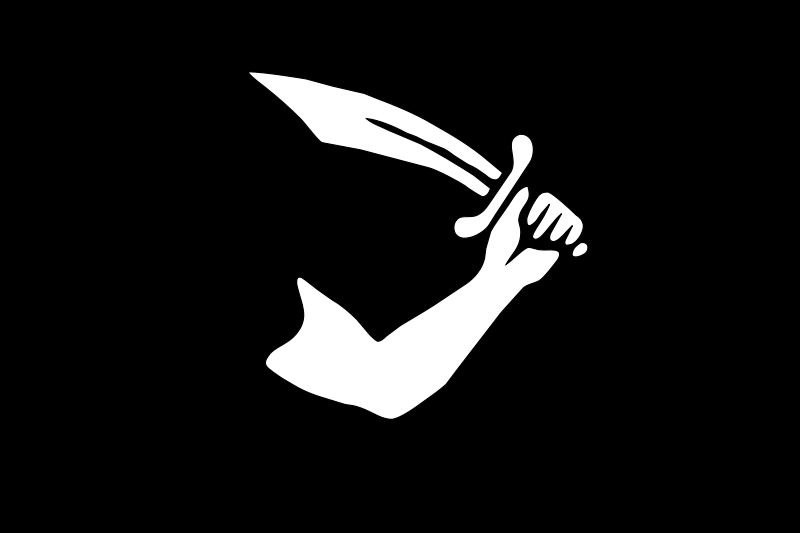
The flag of Thomas Tew blew had a white arm holding short scimitar sword on a black field. The sword signaled that violence was imminent, black background signaled that there is no need of bloodshed. The ones who used red background wanted to show that violence was unavoidable.
9. John Quelch

Historical Mark
John Quelch had a short but lucrative career that lasted for only one year. A chief claim about him that happens to be significant in history is that he was the first person to be tried for piracy outside England under Admiralty Law and without a jury.
Quelch’s Big Loot
John Quelch was a lieutenant under Captain Daniel Plowman. When the Governor of Boston sent him to attack French and Spanish ships, Charles’s crew locked Plowman in his cabin. They elected Quelch as the captain. He turned the ship towards south and plundered nine Portugese ships, gaining large sums of money. The loot’s total value is estimated over £10,000 sterling i.e. approximately £1 million in today’s time. The Charles contained large amounts of Brazilian guns, gold dust, coins, cloth, sugar and hides.
Pirate Flag
His flag is depicted as a figure holding an hourglass in left hand and spear on the right. The spear pierces through a red heart, dripping it with blood. This meant that death was surely coming. Another famous pirate John Phillips, who is also known as Old Roger is rumored to have used this design. The evidence for Quelch using this design is also lacking but it is attributed to him since years.
10. Walter Kennedy
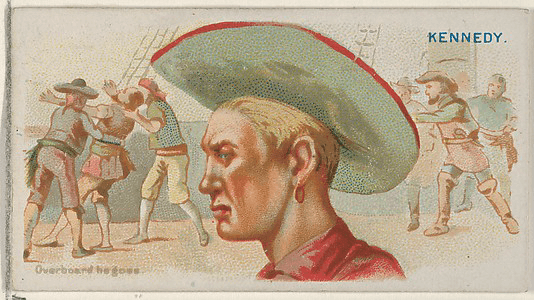
Abandoning his captain and taking over
Walter Kennedy was once remembered as a crew member of Bartholomew Robert. Roberts left him in charge of the Royal Rover, one of his ships. Kennedy took this as an opportunity to become a captain and took the ship with him. The crew gave up piracy under his leadership and set sail for Ireland. Kennedy’s poor navigation skills led them towards the north-west coast of Scotland. Seventeen of his crew members were arrested and put on trial for piracy; nine were hanged.
The end to his crimesKennedy slipped his way to Ireland. He was accused of theft here by one
of his prostitutes and sent to Bridewell prison. He was also denounced as a
pirate by his mate. Kennedy was hanged on July 21, 1721 at the Execution Dock.
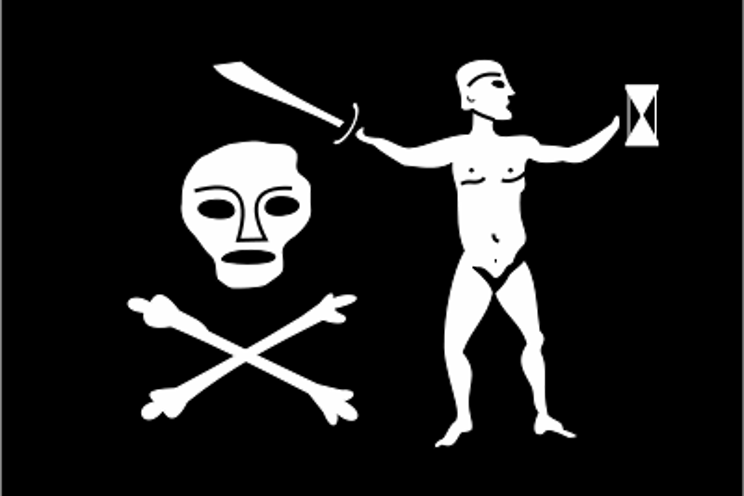
Walter’s flag has a face with two crossed bones underneath it. A naked figure stands next to it. It holds a sword in one hand and an hourglass in the other. This nakedness is a representation of Keneddy’s lack of shame.
Popular Posts
12 Unseen Pictures of Sofia Vergara That are too Hot To Handle
An actress, comedian, producer, television host Sofia Vergara is one of the most loved personality in the TV industry. Bo...
Chandan Roy
Top 10+ McDonald's Characters That Are Better Alternative To The Creepy Clown
When you visit McDonald's, you are entertained by several McD characters designed for kids. Do you know how many Mc D characters are there in total? Let's find it out.
Aaditya M
10 Largest Organs In Human Body
Human body consists of 70 organs that are highly specialized in performing different functions. Millions of cells form part of a...
Swati Bhandari






